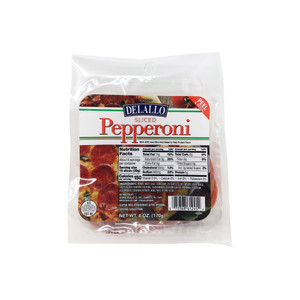DeLallo Sliced Calamata Olives are ready to add some Mediterranean flair to your favorite kitchen creations. The prized Greek Kalamata is known for its almond shape, eye-catching eggplant hue and its larger than life flavor. Its intense and complex flavor is described as briny, tangy, fruity and slightly smoky. With a bold, bright flavor and meaty texture, the Kalamata shines alongside other classic Mediterranean flavors and ingredients such as lemon, chickpeas, roasted red peppers, red wine vinegar, feta cheese, oregano and more. Get creative!
- Popular Greek olive.
- Distinct purple hue.
- Bold olive with big flavors: tangy, tart, briny and smoky.
- Meaty texture with a semi-firm bite.
- Naturally brine cured.
- Sliced for kitchen convenience.
- Kosher.
- All natural.
- Gluten free.
- Vegan/Vegetarian.
Kitchen and Usage Tips:
Sliced Kalamata olives are ready to add a burst of flavor and Mediterranean flair to many of your favorite recipes. Top off Greek-inspired pizzas, flatbreads and leafy green salads. Elevate hummus, crostini spreads and creamy dips. Create colorful pasta dishes, both hot and cold. Give your creamy tuna and chicken salads a boost. Sliced Kalamata olives are perfect for roasted potatoes, veggies and even baked chicken dishes.
Frequently Asked Questions:
What are Kalamata olives?
Kalamata olives are a Greek olive named for the city of Kalamata. They are distinctly almond-shaped and deep purple to black in color. A prized table olive, the Kalamata boasts a meaty presence with a texture that is semi-firm. Their flavor is super bold and tangy, nearly smoky. Like all olives, Kalamatas are a healthy snack that is loaded with good fats, vitamins and antioxidants. They are often paired up with other Greek flavors and mezze platter items.
What do Kalamata olives taste like?
Kalamata olives have an intense, complex flavor that can be described as briny, fruity, tangy and even smoky. They are harvested at peak ripeness and so their flavor is well developed.
What is special about Kalamata olives?
Kalamata are a beloved olive—not just in Greece, but all over the world. They are distinct in their shape, color and flavor. Their flavor is bold and complex with tangy, fruity and smoky notes. Kalamata can be spotted anywhere with their oblong shape and eggplant-purple color. They are great for showing off on cheese plates and charcuterie boards and they are healthy too!
What is the difference between Kalamata olives and black olives?
As for classifications, Kalamata olives are typically considered “black olives,” even if they are dark purple in color. Black olives are just a phrase to classify all ripened olives with a dark brown to black hue. Unlike crisp young green olives that are picked before they are ripened, black olives are usually more complex in flavor and softer in texture. Kalamata olives fall into this category.
What is the difference between Kalamata olives and green olives?
We use the term “green olives” to describe a certain category of olives that are harvested young, or before they are fully ripened. With a green color and a firm, crisp texture, the average green olive is very different from the Kalamata. Kalamata olives are black olives, or olives that are fully ripened. Black olives, in general, are sweeter, more tender and more complex than green olives. Kalamata olives fall into this flavor profile.
What is the difference between sliced Kalamata olives and halved Kalamata olives?
The difference between sliced Kalamata olives and halved Kalamata olives is just in the way they are cut. Halves are pitted Kalamata olives that are cut in half lengthwise. Sliced Kalamatas are sliced lengthwise.















